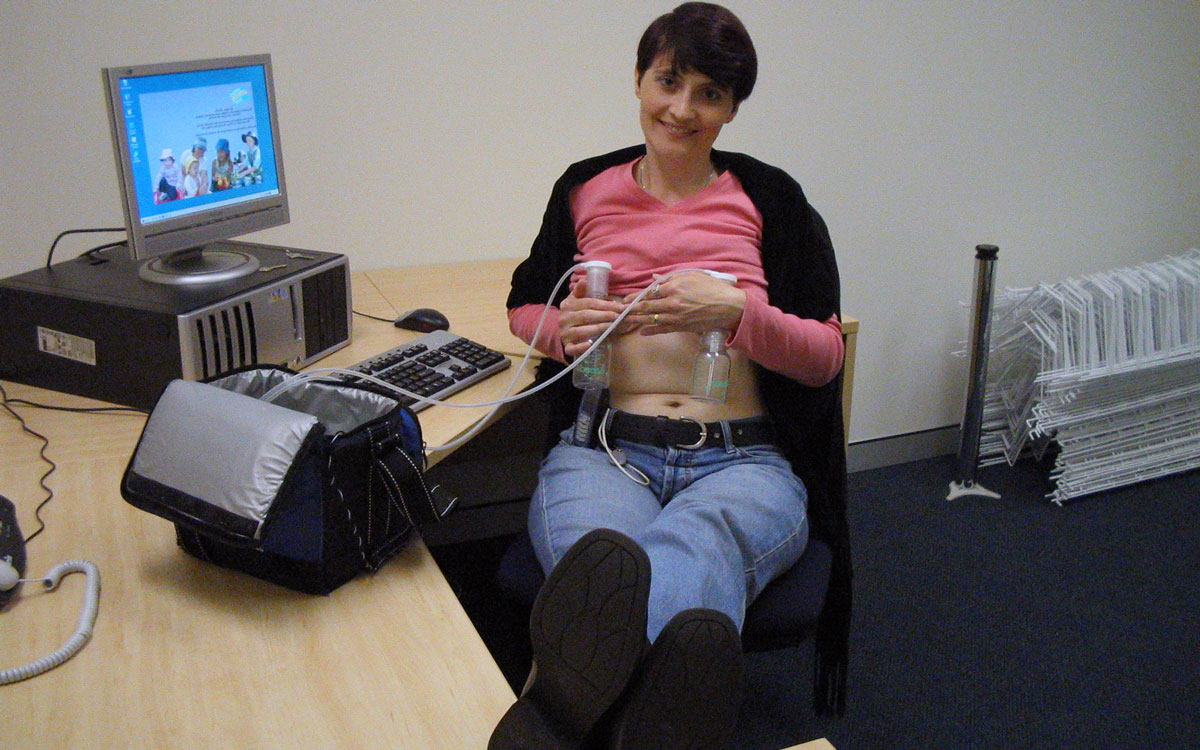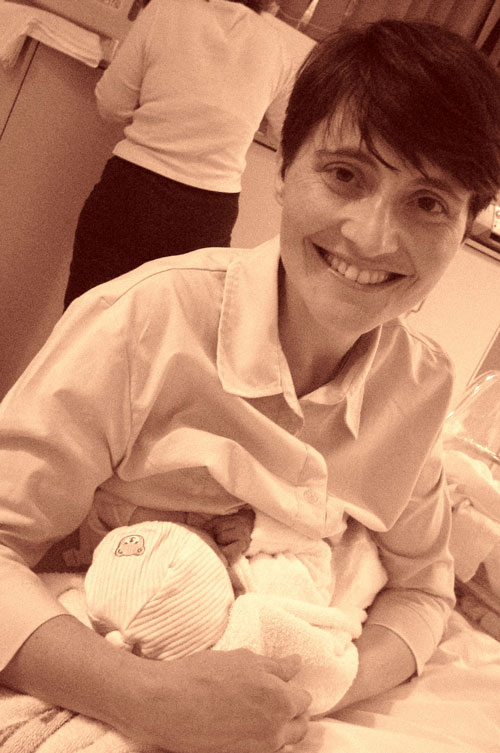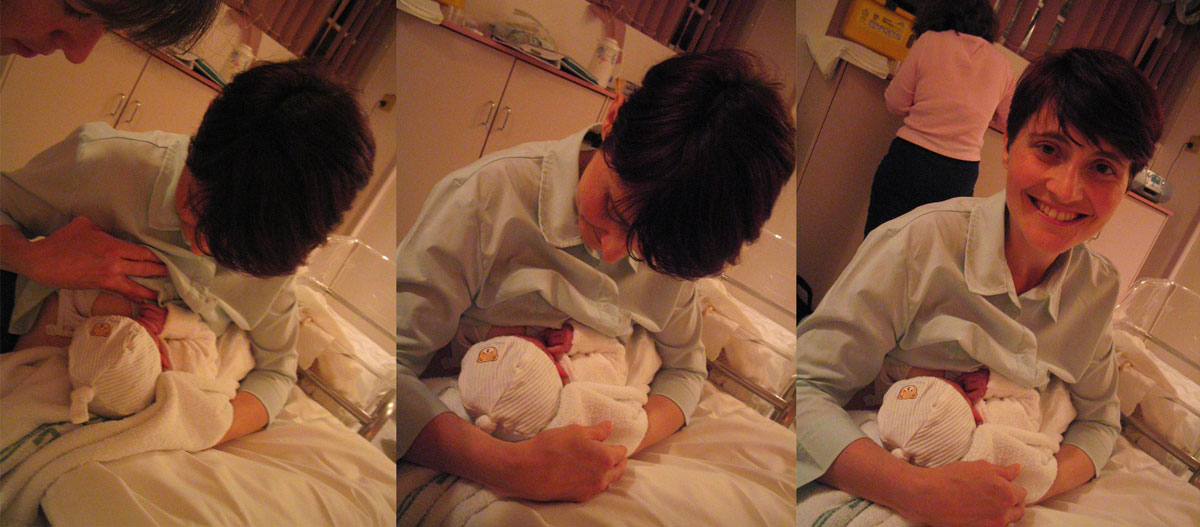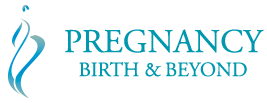As far back as I can remember I have wanted to have children, to be a mother, and throughout my life, I have always seen breastfeeding as one of the most important parts of the early mothering relationship. But despite my plans and dreams, my path to parenthood just didn’t go to plan!
After many losses and feeling emotionally unable to face the possibility of another, my partner and I began to explore what was then considered a radical alternative – to transfer one of our embryos, created with my eggs, to my partner. It was most certainly not what I had envisaged and definitely not what I truly wanted, but faced with the grim prospect of never having a child at all, this seemed like a viable solution. But what of that wonderful breastfeeding relationship I wanted? It seemed it was lost to me forever.

When our IVF specialist casually said ‘You know you could still breastfeed’ all I could do was stare blankly at him.
Still, breastfeed? Without having me actually carrying my child? How could that be possible? How can we achieve it? I all but dismissed the thought from my mind immediately. However some months later when on the first transfer, we found my partner pregnant with my biological child, the idea began to resurface. Was he right? Having lost the chance to carry my child, could I still salvage some of the maternal roles I’d dreamed of by breastfeeding my child? If so, how?
What followed over the next few months was what proved to be an exhausting and at times frustrating research project. With the assistance and encouragement of my private midwife, we scoured every source imaginable for any information we could find on induced lactation, sometimes called adoptive breastfeeding. I spent whole days in book stores reading a sentence in this book, a paragraph in that, an implication in another. I spent whole nights scouring the internet using what in 2004 were considered ‘useful’ search engines, the power of which we would scoff at today. Meanwhile, my midwife searched medical databases for anything, anything at all, that could give us guidance or at least hope.
Along the way, my midwife and I had both found some evidence on the use of the drug Maxolon to boost milk supply.
This is of course not the drug’s primary purpose, which is as a treatment for nausea and vomiting. However none-the-less there was some evidence which suggested that Maxolon could also be beneficial in increasing breast milk supply. There was evidence that the drug passed into breast milk but until I was actually feeding my child this theoretically didn’t pose a problem. When I look back now I can’t really understand why, despite the evidence and my desperation to succeed, I resisted using Maxolon to augment my efforts. I was also concerned about the potential side effects of Maxolon (apart from boosting milk supply) but that was probably not a solid enough basis for my choice. At the core, I suppose it was that I could not reconcile the idea of using drugs to create breast milk I would ultimately feed to my child.
Our first real success came in the location of an article in the journal Breastfeeding Review which ironically at this point in time could only be accessed by ordering a physical copy of the journal. At the same time, I found an obscure blog which detailed one woman’s journey to induced lactation and a small booklet on adoptive breastfeeding published by the Australian Breastfeeding Association. In the absence of any research evidence we could locate, and armed only with personal stories and scant pieces of medical evidence largely related in reinducing lactation after a break, we hatched a plan. Its success rested on a single vital ingredient – a high priced, hospital-grade electric breast pump.
The link between the use of a breast pump and inducing lactation is a simple one… that is hard to believe.
Anyone who has had supply issues knows that the first piece of advice you are often given is that the more you feed your baby, or stimulate your breasts using a breast pump, the more milk you will produce – a simple principle of supply and demand. The part that is hard to believe is that this same reaction can occur without ever carrying or birthing a child. Given sufficient stimulation, women can produce breast milk without having had a baby recently or in fact ever.
The principles and process for attempting to induce lactation seemed relatively simple – use a breast pump every four to six hours to stimulate the production of breast milk. Sounds simple enough… until you consider that I, like most childless women, was not a lady of leisure. The first hurdle I faced was how I could possibly achieve a four to six-hour pumping scheduled when I was away from home eleven hours each day for work.
 My employer did not know my partner and I were expecting a baby, much less the nature of our child’s conception.
My employer did not know my partner and I were expecting a baby, much less the nature of our child’s conception.
My employer also had no idea that I am gay, nor that my partner worked in the organisation. The thought of having to announce all that plus make a request for a space to pump my breasts daily seemed like more than I could bear. But what choice did I have? Success depended on regular pumping and success meant so very much to me.
So it was that I told my stunned employer “I am gay, such-and-such is my partner, we are expecting a baby whom I would like to attempt to breastfeed, and this is how that works…” To give her her due, my CEO was utterly supportive even though to her this was a curious situation of epic proportions. I was provided with the use of an empty office and time out from my duties to pump my breast, without an expectation of making up the time.
By this stage, we were around 20 weeks out from our baby’s due date and I felt an extreme sense of urgency to get started inducing lactation. I begin with a schedule of four hourly pumpings, beginning with 5 minutes each side and increasing after a fortnight to 10 minutes each side. About four weeks in and right at the point I was beginning to feel discouraged I put my bra on one morning and noticed it was a little tighter than usual. Taking it off and looking in the mirror and discovered that my breasts were discernibly heavy. I was elated. Win lose or draw, something was happening.
Feeling empowered again I searched for anything that could help spur things along and found some articles commenting on the value of using a soft toy to inspire calm and create an association point between milk production and your baby.
Armed with the bear I had bought the day of the transfer in hopes of success, I continued my pumping regime. Two weeks later and six weeks after I began I saw the first signs of milk – only about a teaspoon and only from one breast but it was a start.
Despite my seeming successes, with only 14 weeks to go until my baby was born, assuming she stuck to the schedule (!), I felt a need to once again boost my progress. Having read a couple of blog posts debating the need to pump at night I began to wonder if perhaps this is what I needed to do. Purely from the point of view of ensuring I got enough sleep while trying to induce lactation I had elected not to pump at night. But the more I pondered the more I realised that maybe this is what I needed to do.
As an experiment and armed with an alarm clock, one weekend I slept in the spare room (to avoid waking my partner who needed sleep more than me). Working to the ten minutes each side plan, I treated my breast pump like a newborn, pumping for 20 minutes in total every 3 hours. I then followed this by returning to my four-hourly daily routine, plus one pumping session during the night. Within the first week, a teaspoon of milk from one breast had turned into a tablespoon from each and I began to see the first signs of a slow but steady daily increase.
By the time I reached the last four weeks of my partner’s pregnancy, I was pumping about 50 – 60mls in total at each session.
When my daughter arrived at 40 weeks in October 2004, I was able to give her her very first feed. I can’t express to you the joy I felt at that moment, but perhaps you can see it in my face in the picture attached to this article.

My journey to successful breastfeeding certainly did not end there. I did have supply issues as my baby’s needs speed ahead of my increasing supply. However with the help of a Supplemental Feeding System filled with my partner’s breast milk I was able to continue building my supply while satisfying my daughter’s needs. I continued to breastfeed my daughter until she was 18 months old, with the introduction of solids resulting in less need for the supplementary breast milk.
On more than one occasion during my daughter’s babyhood and since I have been approached by women looking for advice on inducing lactation. It has been a wonderful experience to be able to make their search for research, evidence and advice so much easier than mine was. I can’t deny that my journey to breastfeeding through induced lactation was fraught with challenges and fears. However carrying a second child myself and breastfeeding her, has shown me that whether induced or not, breastfeeding can be challenging for any woman!

 As my mind drifts back to that time though, I have a singular overpowering feeling – pride.
As my mind drifts back to that time though, I have a singular overpowering feeling – pride.
Pride in myself, my refusal to give up and my determination to succeed. Pride in my daughter and how she thrived. Also, the pride in what my struggles gave my baby – in what my milk and our breastfeeding relationship delivered her. I know in my heart that despite my reservations about my child being carried by another woman, the crux of my bond with my child, the love that grew daily, was nurtured by my milk every bit as much as she was.
Author’s note: If you are pursuing induced lactation, the drug of choice these days is Motilium, rather than Maxolon. Motilium does not cross the blood-brain barrier and therefore has fewer side effects, while still promoting breast milk production. Speak to your doctor, midwife or a lactation consultant for more information.
Written for PBB on 7th April 2014
References
Australian Breastfeeding Association. (2004) Relactation and adoptive breastfeeding Malvern, VIC: Australian Breastfeeding Association
Kirkman, M., & Kirkman, L. (2001). Inducing lactation: a personal account after gestational “surrogate motherhood” between sisters. Breastfeeding Review : Professional Publication of the Nursing Mothers’ Association of Australia, 9(3), 5–11. Retrieved from http://www.ncbi.nlm.nih.gov/pubmed/11831689


Recent Comments